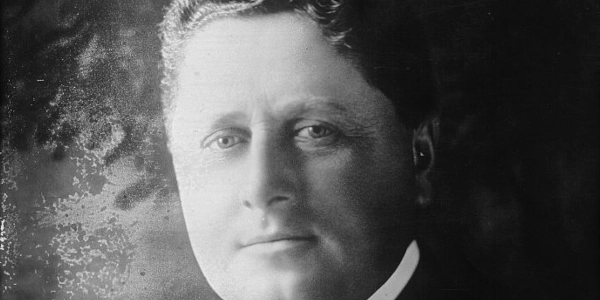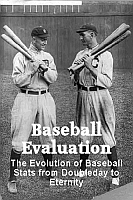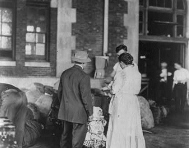Sponsor this page. Your banner or text ad can fill the space above.
Click here to Sponsor the page and how to reserve your ad.
-
Timeline
Detail - 1891
April 1, 1891 - The Wrigley Company is founded in Chicago, Illinois, originally selling soap, baking powder, and the next year, chewing gum.

So how did they make the transition? William Wrigley, Jr. had been working in his father's Philadelphia soap factory when he decided to spread his wings west, arriving in Chicago with $32 in his pocket. He immediately rented an office on East Kinsey St., and began to sell what he knew, soap. It went slow for a time, but Wrigley hit on the idea of a giveaway promotion; for each case of soap sold, he'd give the merchant an umbrella. He added baking powder to his line. The soap and baking powder were doing okay, but Wrigley found out that when they gave away gum with the baking power, sales of the gum exploded. They used mint, real sugar, and the smell almost sold the pack. Even today, a depression era pack of gum in the Chicago History Museum, smells of mint.
Wrigley switched gears then to gum, made by the Zeno manufacturing company for Wrigley (he bought Zeno in 1911), and candy sales. He was a master advertiser and did so in one of the first mass marketing efforts, but it was more due to his unending durability in advertising than some splashy campaign. His philosophy was "Advertising is pretty much like running a furnace. You've got to keep on shoveling coal. Once you stop stoking, the fire goes out." William Wrigley, Jr. "Make a good product for a fair price, then tell the world."
By 1921, the various factories of Wrigley around the world were manufacturing eight billion sticks of gum per year.
Today, the Wrigley Company is owned by Mars, who along with Warren Buffett, bought the firm in 2008 for twenty-three billion dollars. Their gum is the most popular in the world, twice that of the company in second place. And although the main Chicago factory no longer produces the gum, and the corporate headquarters has, since 2012, no longer benn in the Wrigley Building on Michigan Avenue, global headquarters are still maintained in the city of Chicago.

William Wrigley, Jr. Legacy
William Wrigley, Jr. was a soap salesman from a Quaker family in Philadelphia. He had been a troublemaker in school, dropping out to work in his father's soap factory, and moved to Chicago to pursue his own goals at twenty-nine years of age. As noted above, it was not gum he first peddled, but Wrigley's Scouring Soap. His first premium was baking powder with the soap. The baking powder became more popular. Then he added a free two packs of gum with the baking powder. The gum became more popular. William Wrigley, Jr. was a nimble businessman, switching gears to the product that sold best. Within a few years, it was apparently the gum.
By 1919, Wrigley was an unabashed success, venturing west to buy Santa Catalina Island off the coast of California, and turning it into a landscaping paradise around a casino, hotel, and steamships who would ply to the island. He started a factory to make tiles to employ the local residents, and set up a conservancy, organized by his son, to protect the island forever.
But for most, his legacy outside Wrigley Chewing Gum was in baseball. In 1916, he was part of a consortium who bought the Chicago Cubs, along with businessman Charles Weeghman, for $500,000. His partner had owned the Chicago Whales, also known as the Chi-Feds, of the Federal League, a short-lived major league that played in 1914-5. By 1918, Weeghman sold a major stake in the club to Wrigley; by 1921, he was majority owner; by 1925, he was the sole owner, buying out Albert Lasker. They played their games at Cubs Park, formerly known as Weeghman Park as the Whales were the first club to play there during their Federal League days. First game had been April 23, 1914. It was known as Cubs Park under Wrigley until 1927 when he changed the name to Wrigley Field.
Wrigley was also a supporter of the Salvation Army. During the depression, in 1930, he allowed the group to use his six story factory building in Chicago, then gave it to them outright the next year. It was known as New Start Lodge, and later renamed Wrigley Lodge.
Photo above: Building advertisement for Wrigley Gum in Trenton, Florida, 2020, Carol M. Highsmith. Courtesy Library of Congress. Below: Photo of William Wrigley, Jr., 1915, Bain News Service. Courtesy Library of Congress. Info Source: Library of Congress, Companieshistory.com; forbes.com; madinchicagomuseum.com; Wikipedia Commons; Wrigley Chewing Gum Co.; "Wrigley Sold to Warren Buffett and Mars," the Guardian.com.







